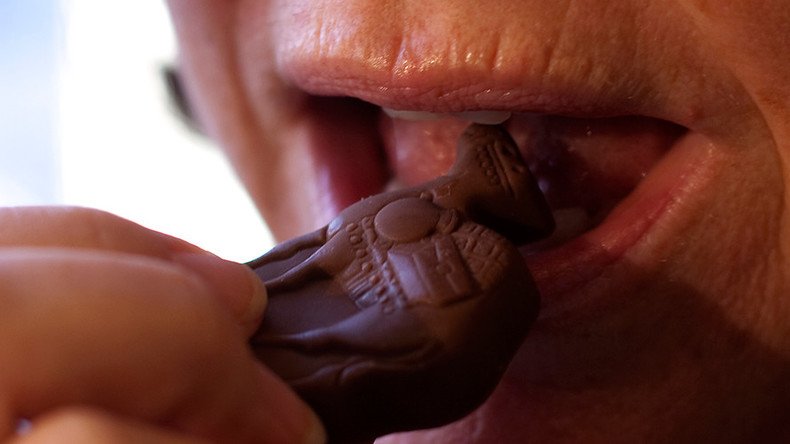Sweet music: Certain melodies enhance creaminess of chocolate, says new study

A lab experiment has confirmed that a consumer’s perception of the texture of chocolate can change notably depending on what kind of music they are listening to, showing that the brain’s perception mechanisms are more complex than previously thought.
Experimental psychologists from Vrije University in Brussels and the Crossmodal Research Lab at Oxford University studied 116 volunteers who ate two pieces of Belgian chocolate while listening to two specially-composed pieces – a high-pitched creaminess-enhancing flute track, and a roughness-inducing staccato violin plucking.
“The participants tasted the same chocolate twice (without knowing that the chocolates were identical), each time listening to one of the soundtracks. The ‘creamy’ soundtrack enhanced the perceived creaminess and sweetness of the chocolates, as compared to the ratings given while listening to the ‘rough’ soundtrack,” says the abstract of the study, published in the journal Appetite. “Moreover, while the participants preferred the creamy soundtrack, this difference did not appear to affect their overall enjoyment of the chocolates,” it continued.
The response appears to be evidence of synesthesia – one set of senses, hearing, interfering, and interacting with another – in this case, taste.
“It seems we find it difficult to keep our experiences separated,” said Professor Charles Spence of Oxford University, who led the study, adding “what we feel about one thing carries over to influence what we think about others we experience at the same time.”
The study's authors were speaking to science journalist Richard Gray, and their comments were published by the Daily Mail.
Felipe Reinoso Carvalho, the lead author of the study from Vrije, said that the experiment showed that sound not only influences taste – a basic characteristic that had already been proven to be susceptible to manipulation – but also the subtler qualities of food.
“It is totally about textures. It is not in the scope of taste anymore, it is in the scope of flavors, which are much more complex. Creaminess is much more related to consonant harmonics, legato and reverberation. Roughness is an opposite auditory universe,” he said.
While the difference in perception is genuine, the authors are working on developing real-world uses for their findings, including working with Belgian chocolatiers to provide boxes with special soundtracks. The problem of finding universal applications is complicated by the variability in people’s tasting and hearing capacities, as well as personal and cultural associations.
“There are challenges certainly – imagine in a restaurant when everyone is eating a different course at a different time or a mixed box of chocolates when everyone takes one at the same time,” said Spence. “But moving forward one might think of providing tracks that include both a bitter, a sweet, and creamy notes or riffs, so whatever you are eating, you can get something out of the experience,” he added.
Starting with a 2004 paper titled ‘The Role of Auditory Cues in Modulating the Perceived Crispness and Staleness of Potato Chips,’ which discovered that crisps that crunch more loudly taste fifteen percent fresher and won the Ig Nobel prize, Spence has taken the wrapper off a new direction in psychological research.

The Crossmodal Research Laboratory has since published over 500 papers, with titles like ‘Sensory expectations elicited by the sounds of opening the packaging and pouring a beverage,’ ‘The influence of soundscapes on the perception and evaluation of beers,’ and ‘The Taste of Typeface.’ Many of these are, no doubt, being hungrily gobbled up by marketers around the world to manipulate us ever more effectively, but others explore unusual pathways and associations, such as using tactile stimuli to prompt car owners to drive more safely.














